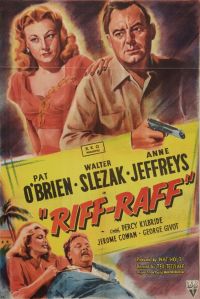The Boy With Green Hair (1948)
Directed by Joseph Losey
RKO Radio Pictures
If you only know Dean Stockwell as the craggy character actor who appeared in TV shows like Quantum Leap and Battlestar Galactica, it might be hard to believe that he was ever an adorable little 12-year-old boy.
Well, he was. Even with a shaved head, which is how he first appears in The Boy With Green Hair, in the 1940s Stockwell was cuter than a barrel of baby pandas.
The Boy With Green Hair was Joseph Losey’s first feature-length film. It’s a lovely little Technicolor parable that opens with the song “Nature Boy.” (You know, the one about “a very strange, enchanted boy”?) Nat King Cole’s recording of the tune was a big hit in 1948, and was the #1 single in the United States for seven weeks. The melody of the song recurs throughout the film.
It’s the story of a boy named Peter Fry (Stockwell), whose parents are dead, but no one seems to want to tell him. He’s shuttled around from home to home, always carrying a letter to show his foster parents (who he refers to as his “aunts and uncles”), although he’s not aware of the contents.
Eventually he settles down with “Gramp,” a former vaudevillian and magician (and current singing waiter) played by likeable old Irishman Pat O’Brien.
Peter thrives under Gramp’s care, feeling good enough about life that he no longer has to sleep with a baseball bat (though he keeps it on the floor next to him just in case). One day, however, his school holds a charity drive for war orphans. As Peter stands in front of a poster with a black and white photograph of an “Unidentified War Orphan,” he’s forced to confront the truth about his parents. They died in the London Blitz, and Peter can no longer deny the horrors of war. All of a sudden, war orphans aren’t just “over there,” they are right here, and he is one of them.
Not long after this revelation, he wakes up one morning with bright green hair. Punks with brightly dyed hair turned heads in the 1970s, and it was even more unheard of in the 1940s. Peter is instantly ostracized by people who happily tousled his hair when it was brown. His teacher, Miss Brand (Barbara Hale), tries to make him feel OK about his condition. He may be the only kid in class with green hair, but there’s also only one boy who has red hair. But nothing stops the bullying and name-calling. The world is cruel to those who are different.
The Boy With Green Hair is told in flashback, as Peter sits in a police station with a shaved head, telling his story to kindly child psychologist Dr. Evans (Robert Ryan). The message of the film might seem simple, but Losey’s direction and Stockwell’s assured performance elevate it to something haunting and strange that can’t be boiled down to a single slogan. It’s a movie that tells a serious, allegorical story about a child that other children can understand.



